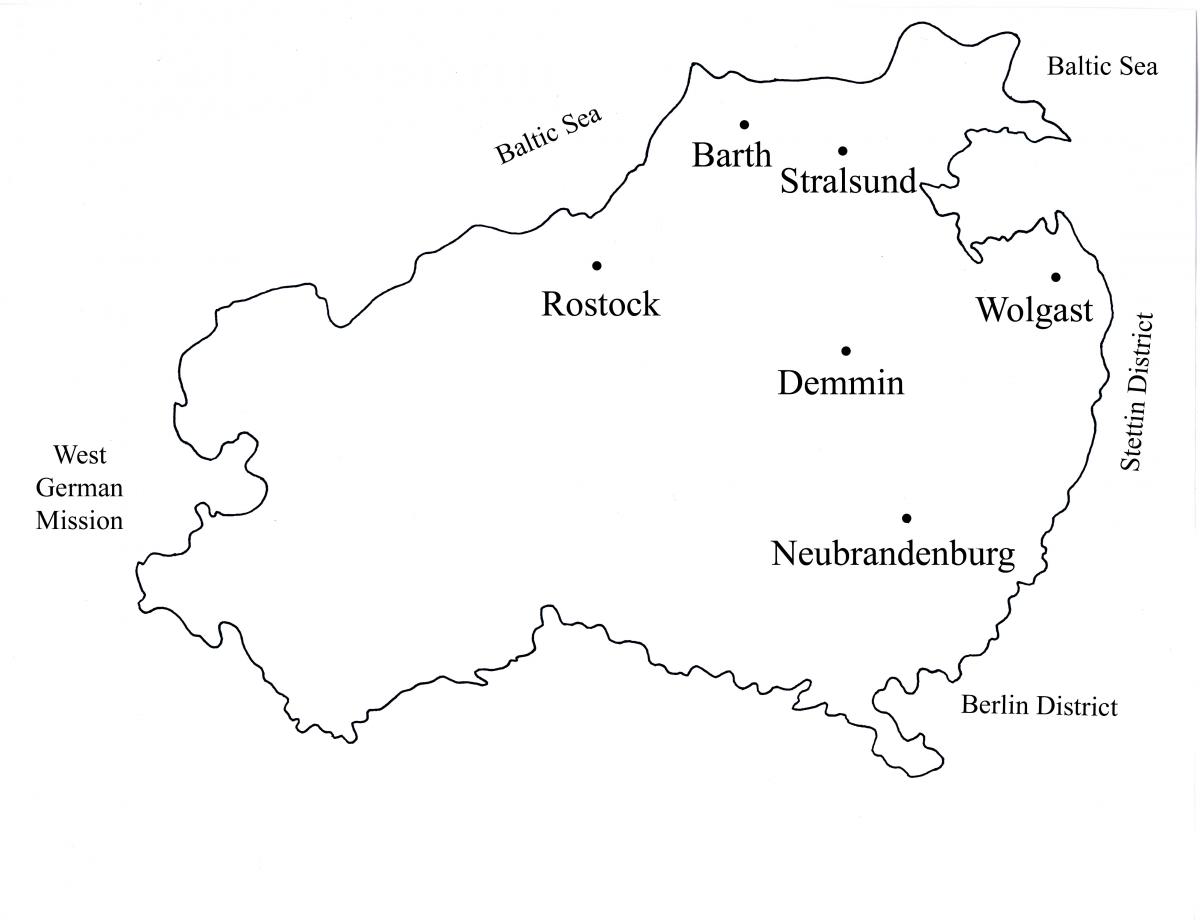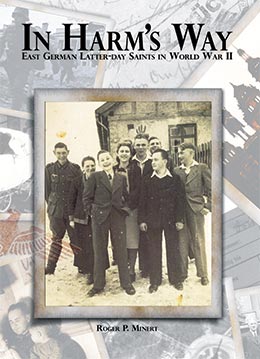Rostock District
Roger P. Minert, In Harm’s Way: East German Latter-day Saints in World War II (Provo, UT: Religious Studies Center, Brigham Young University, 2009), 355-6.
With only 248 members of The Church of Jesus Christ of Latter-day Saints within its boundaries at the beginning of the momentous year 1939, the Rostock District with its four branches and two groups was the second-smallest in the East German Mission. On the other hand, the territory covered by the district was significant. The historic provinces of Mecklenburg-Schwerin and Mecklenburg-Strelitz were the core of the district, which also included a small portion of western Pomerania.
The landscape along the Baltic Sea is relatively flat, sandy countryside with very few cities, many of which are close to the sea. The principal city in the district was Rostock, a stronghold of the old Hanseatic League. The Barth Branch was twenty-five miles to the northeast, also a coastal town. Demmin, in Pomerania, was thirty-five miles to the east. In 1939, there were two groups of Saints, meeting in Stralsund (thirty-five miles east-northeast) and Wolgast (sixty miles to the east).
| Rostock District[1] | 1939 | 1940 | 1941 | 1942 |
| Elders | 17 | 16 | ||
| Priests | 3 | 4 | ||
| Teachers | 6 | 8 | ||
| Deacons | 17 | 14 | ||
| Other Adult Males | 35 | 39 | ||
| Adult Females | 145 | 146 | ||
| Male Children | 13 | 11 | ||
| Female Children | 12 | 13 | ||
| Total | 248 | 251 | 249 | 242 |
The president of the Rostock District in 1939 was Walter Czerny.[2] He was succeeded on January 14, 1940, by Rudolf A. Noss of Rostock.[3] Arno Dzierzon is listed as district president as of April 23, 1941.[4] Little is known about the service of these three men in this important calling.
 The Rostock District was one of the most sparsely populated in the mission.
The Rostock District was one of the most sparsely populated in the mission.
The Rostock District was annexed to the Stettin District (to the east) on February 15, 1942. The announcement made in the sacrament meeting in Rostock on that date did not include details for the change. Perhaps the lack of priesthood leadership within the three branches of the district required more direct involvement of district presidents Erich Berndt and Ernst Winter of Stettin.
It appears that at least three branches of the Rostock District were holding some meetings (usually in private homes) at the end of the war. From the accounts of eyewitnesses, few members fled the invading Red Army. As difficult as life under the conquerors was, the Latter-day Saints in the district were usually able to maintain their homes.
The group meeting in Stralsund had declined into historical obscurity, but at least one family is known to have belonged to the group in Wolgast (see that chapter).
Notes
[1] Presiding Bishopric, “Financial, Statistical, and Historical Reports of Wards, Stakes, and Missions, 1884–1955,” CR 4 12, 257.
[2] The Church of Jesus Christ of Latter-day Saints, Geschichte der Gemeinde Rostock, 1893–1944 (Rostock, Germany: The Church of Jesus Christ of Latter-day Saints), October 30, 1939; trans. the author.
[3] Ibid., September 15, 1940.
[4] Ibid., March 23, 1941.
